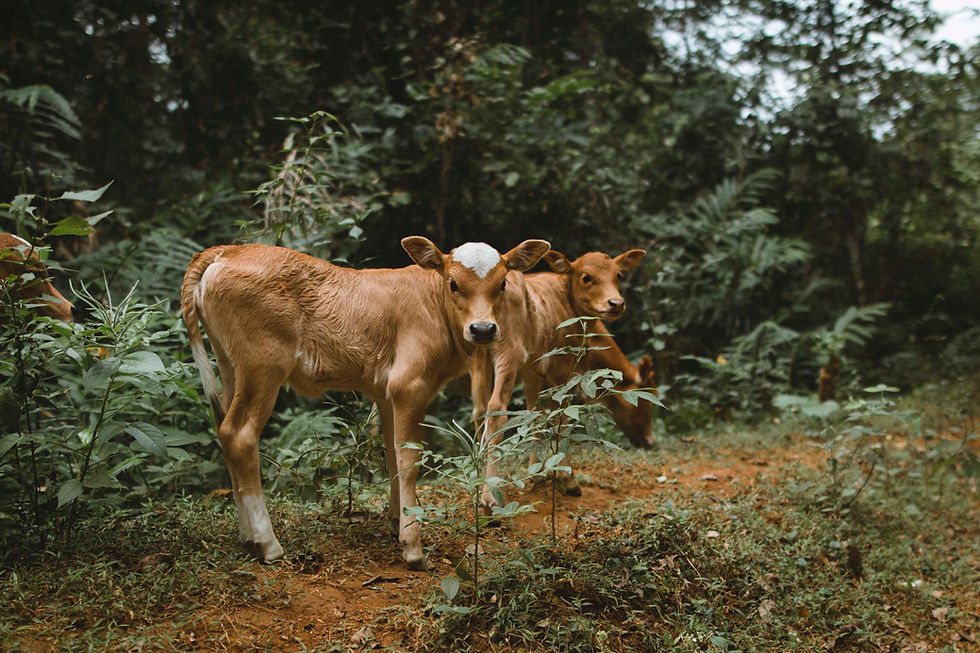Embracing the past, building the future
- Maya García
- Jul 7, 2023
- 3 min read
Updated: Jan 12, 2024

In a transformative move towards a more sustainable future, in Watkins Glen, New York, has embraced the age-old farming technique of silvopasture, connecting it to the vision of a global society committed to achieving the United Nations Sustainable Development Goals (SDGs). The farm, owned by Brett and Maria Chedzoy, has become a beacon of hope, showcasing how a marriage of civil society efforts and sustainability practices can revolutionize the agricultural landscape.
Silvopasture, which involves allowing cows to graze on a diverse range of plants in forests and tree-filled pastureland, has witnessed a remarkable resurgence worldwide. This method, supported by organizations such as the 11th Hour Project, is gaining traction due to its potential to mitigate climate change, protect ecosystems, and promote sustainable food production.
Brett Chedzoy, an agroforestry educator at the Cornell Cooperative Extension, first encountered the concept while serving in the Peace Corps in Argentina during the early 1990s. Inspired by the ecological benefits and the vital role of cattle in fire prevention through grazing, Chedzoy embarked on a mission to implement silvopasture upon returning to his family's farmland in New York.
The Chedzoy's farm, spanning 300 acres and home to approximately 100 cows, primarily Black Angus, showcases the remarkable potential of silvopasture. The cows enjoy a unique blend of lush green pastures and wooded areas, where they graze on grasses, shrubs, and even tree branches. The symbiotic relationship between cattle and the environment is evident as the cows instinctively self-medicate by selecting the plants that contribute to their well-being.
Silvopasture not only benefits the cows' health but also provides a multitude of advantages for farmers and ecosystems. The technique allows for extended grazing seasons, ensuring an abundant food supply throughout the year. Furthermore, silvopastures exhibit increased resistance to droughts, serving as natural sanctuaries for plant life during harsh weather conditions.
Moreover, the implementation of silvopasture minimizes the need for additional feed supplements and emissions-intensive fertilizers, thus reducing the carbon and nitrous oxide emissions associated with traditional livestock farming. By integrating trees and diverse vegetation, silvopasture promotes carbon sequestration, playing a crucial role in mitigating climate change and aligning with the SDGs' objectives.
Nevertheless, the adoption of silvopasture requires meticulous management and daily rotation to prevent potential tree damage caused by livestock. Farmers must remain vigilant and address any wear and tear promptly to safeguard the integrity of the forest ecosystem.
While the benefits of silvopasture are clear, its widespread implementation requires support from civil society and policymakers. Currently, accessing federal funding for silvopasture initiatives poses challenges due to bureaucratic hurdles and lengthy application processes. However, as the technique gains popularity, efforts are underway to streamline and enhance the availability of financial support to farmers seeking to adopt sustainable practices.
The success of Brett Chedzoy and Angus Glen Farm has inspired a new generation of farmers dedicated to regenerating their lands through agroforestry. One such farmer is Katherine Carestio, who considers Chedzoy a mentor and credits him with helping establish her own silvopasture farm, Backbone Farm in Trumansburg, New York.
As silvopasture gains recognition as a practical solution to address the climate crisis and advance the SDGs, Chedzoy envisions a future where hundreds of thousands of acres across New York are transformed into thriving silvopastures. This vision aligns with the global society's aspirations for sustainable land use, responsible consumption, and environmental stewardship.
Angus Glen Farm's adoption of silvopasture exemplifies the transformative potential of sustainable farming practices. By connecting with the vision of a global society committed to the SDGs, the farm has become a beacon of hope, showcasing how civil society initiatives and sustainable agriculture can work hand in hand. The journey towards a more sustainable future starts on farms like Angus Glen, where the harmony between nature and agriculture can pave the way for a thriving planet.
More information: https://www.theguardian.com/environment/2023/jun/18/cows-sustainable-farming-silvopasture
Youtube credits: @northeastclimatehub1819
